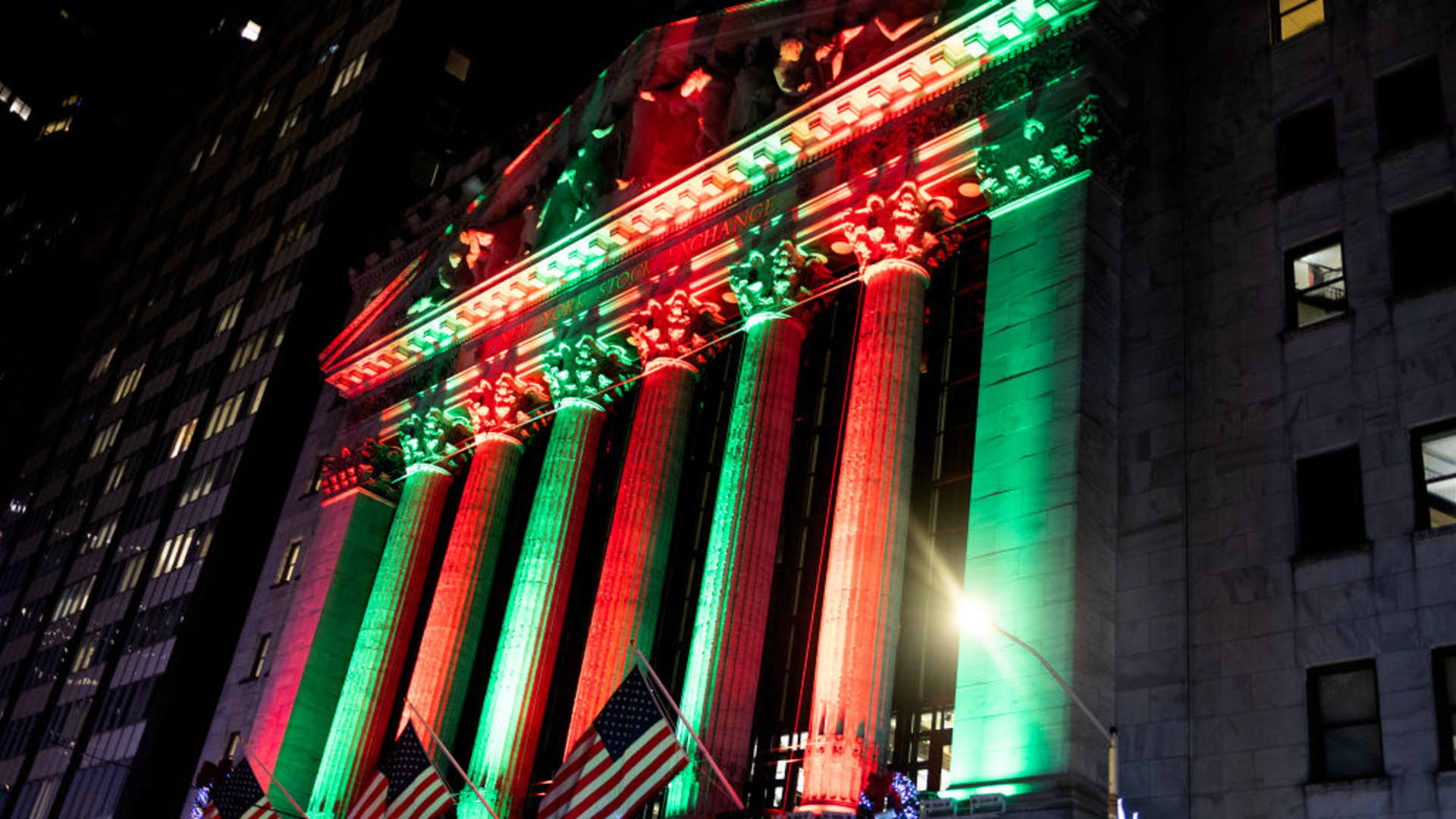[ad_1]
Twelve months ago, Tom Lee bet that 2023 was going to be perfect.
While many of his peers on Wall Street were warning about an impending economic recession, Mr. Lee, a stock market strategist who spent more than a decade running JPMorgan’s equity research before setting up his own firm, Forecasts in December 2022 will see declining inflation and economic resilience broadly dampening the bearish mood.
Mr. Lee was right. Despite political instability over the country’s debt ceiling, a banking crisis in March, fears over the cost of financing the government’s fiscal deficit, the ongoing war in Ukraine and fresh conflict in Israel, the core of Mr. Lee’s prediction came to fruition in 2023. Inflation has fallen, unemployment remains low, and the S&P 500 is up 25 percent.
Most investors disagreed with Mr. Lee’s forecast; In 2023, they pulled more than $70 billion from funds buying US stocks, according to EPFR Global data. According to Morningstar Direct, only a quarter of fund managers whose performance is benchmarked on the S&P 500 have beaten the index’s returns this year.
“2023 was a year when people were so convinced that we would have a recession and they looked at everything from that perspective,” said Mr Lee, head of research at Fundstrat. “Then there were people like us who said we don’t know the future but there is very little evidence that a recession is coming.”
Looking to 2024, forecasters tracked by Bloomberg more broadly share Mr. Lee’s optimism, including analysts at Citigroup and Goldman Sachs. Deutsche Bank equity strategist Binky Chadha, who bet against the consensus along with Mr Lee last year, is also predicting the bullish rally will continue.
At the same time, analysts at Morgan Stanley, JPMorgan and others say the absence of a serious recession in 2023 doesn’t mean it’s been avoided entirely, as the full impact of higher interest rates is still working out on the economy. Used to be.
“There are a lot of things that have to go right for the other side to come out unscathed,” said Mike Wilson, chief equity strategist at Morgan Stanley. He revised his bearish bets in July, although he still did not move away from his stance that the economy would get worse.
At the center of both views is the path of inflation and whether the Federal Reserve can get the pace of price growth back to its target of 2 percent before the economy sinks into recession.
The Fed started applying the brakes on the economy by raising interest rates in March 2022. But the central bank has recently seemed confident that it is getting closer to its target. The consumer price index rose 3.1 percent over the year through November, down from a peak of more than 9 percent by June 2022. Core CPI, which excludes volatile food and energy prices, remained at 4 percent.
The sooner the Fed reaches its goal, the sooner it can begin to take its foot off the brakes on the economy. The central bank recently forecast lower interest rates next year. Mr. Lee said that even without a rate cut, falling inflation and historically high wage growth could encourage consumers to continue spending, leading to even greater growth in corporate profits.
Others are less convinced. While the labor market remains strong, early signs of weakness have appeared in recent months, with unemployment rising modestly as more people look for work. Credit card defaults and the number of people delaying car loan repayments are also rising, as investors view consumer finances as stretched further after the repeal of the student loan forgiveness plan. With inflation still above the Fed’s target, these cracks may widen in the coming year.
JPMorgan equity strategist Jason Hunter said the market appears to be ignoring the expected slowdown in growth next year. “It looks like the equity markets are pricing in very good outcomes,” he said.
While the service side of the economy, such as restaurants, has been good this year, manufacturing has struggled after peaking in 2022.
After excelling in 2022, energy stocks remain negative for the year. Utilities stocks – usually a haven when other parts of the market are in turmoil, because of their steady income stream – have fallen more than 10 percent since January. Smaller companies have also lagged, with the Russell 2000 index still down about 15 percent from its previous peak and up 18 percent for the year.
For Mr. Lee and the growing flock of market bulls, these unpleasant areas of the market offer an opportunity in 2024. A turnaround in the manufacturing slowdown, as companies work through backlogs of inventory and begin placing new orders, could help companies that have been struggling hold on in 2023.
Mr Chadha of Deutsche Bank said economists have consistently underestimated the amount of growth in the economy this year. He thinks this is likely to happen again.
“We think we’ll get positive growth surprises that will drive equities higher,” he said.
Those who are more bearish say the manufacturing recovery is not assured and a decline in those sectors of the market in 2023 could be a warning that if it were not for some of the giant technology stocks that have pushed the S&P 500 up picked up, the stock rally will look very different.
These tech stocks have been so influential that they have even earned themselves the nickname of the Magnificent Seven. It’s a group that boasts some of the biggest companies on the market: Apple, Microsoft, Alphabet, Amazon, Nvidia, Meta and Tesla. Without them, the S&P 500 would have been up about 10 percent this year.
“If the average companies don’t see an improvement, that’s a risk to me in a tough situation,” said Morgan Stanley’s Mr. Wilson. “If we’re going to have a recession, it’s going to be when these businesses decide to start letting people go.”
For Mr. Lee, history suggests a different outcome. When the S&P 500 has risen at least 15 percent for the year, which has happened 28 times since 1950, half the time the index has risen 10 percent the following year, and more than 70 percent of the time it’s positive, he said. And while interest rates were previously between 3 and 5 percent, stock market valuations are similar to what they are now, which suggests the rally hasn’t been too extreme.
“People are trying to be too theoretical about the stock market,” Mr. Lee said. “Embracing chaos is a fairer way to approach the market.”







